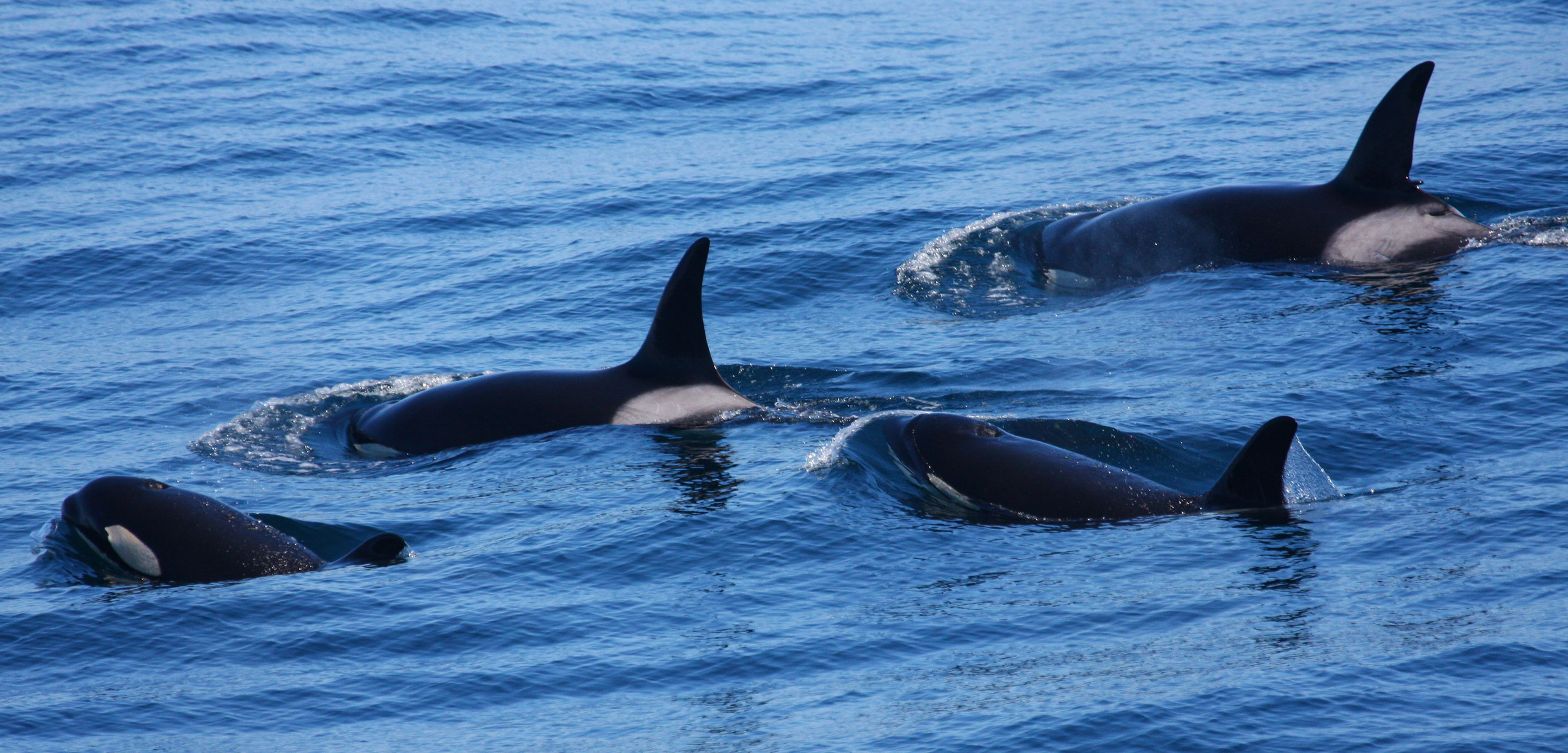Unlocking the Mysteries of the Outer Coast Killer Whales
Off the United States west coast, an assemblage of outer coast killer whales hunt from deep-water canyons.
Article body copy
Killer whales are among the most widespread animals in the world, but in a vast ocean even the lives of cosmopolitan species can be mysterious. By analyzing more than 100,000 photographs of killer whales taken off the United States west coast, and assessing where each animal was seen and in whose company, a team of researchers has catalogued a group of killer whales off the Oregon and California coasts. This work has furthered our understanding of the killer whale family tree.
“Killer whales are found all over the world,” says Josh McInnes, a master’s student at the University of British Columbia, who led the study. “They spend most of their time in coastal waters, but we’re now finding that they do inhabit the offshore oceanic waters. And there’s basically nothing known about them out there.”
Outer coast killer whales are thought to be a subset of transient, or Bigg’s, killer whales, marine mammal specialists known for their highly coordinated hunting sorties. For decades, scientists have observed that transient killer whales in the eastern Pacific are a mix of multiple pocket communities—unique cohorts with unique cultures. A paper describing distinctions between outer coast transients and a subpopulation that stays closer to shore, for example, was published in 2013. The encounters included in the new catalog, which took place between 2006 to 2018, have further bolstered the idea of diversity within transient killer whales and builds on observations published in a 1997 catalog.
This assemblage of outer coast killer whales stands out in that they seem to spend much of their time traveling along the edge of the continental shelf between central California and Oregon. It’s thought that some outer coast killer whales specifically target biodiverse canyon areas, such as California’s Monterey Canyon, to forage for larger pelagic prey like gray whale calves and elephant seals.
“When you look at the open ocean, you can’t see anything but water,” says McInnes. “But below the surface, deep down, there is a whole interesting bathymetry that supports life.” Submarine canyons, he explains, promote upwelling, a process that brings nutrient-rich water up to the surface. These nutrients, in turn, feed plankton, which bring fish and marine mammals to the table.
In contrast to the canyon foraging strategy of the outer coast population, the more familiar coastal transient killer whales—animals routinely encountered in nearshore waters off Washington, British Columbia, and southeast Alaska—patrol popular haulouts hunting for pinnipeds such as harbor seals and sea lions.
Though more work is needed to understand where exactly the lines should be drawn between these killer whale factions, several key differences in their behavior have already come to light.
Aside from having distinct dietary preferences and habitats, outer coast and nearshore transient killer whales also appear to have different dialects. The calls of some outer coast killer whales are higher pitched than those of their better-known coast-hugging kin—perhaps because of a need to be heard above the low roar of offshore winds, suspects McInnes.
“I think it’s really exciting,” says Lawrence Dill, a behavioral ecologist at Simon Fraser University in British Columbia who wasn’t involved in the study. “Top predators are so important to the functioning of ecosystems. It’s important to understand where these different groups of orcas are potentially having impacts that would transmit through entire communities.”
“People talk about biodiversity a lot,” adds Dill. “Most people tend to understand that as species diversity. It’s important to realize that within species, sometimes even within a population, there’s behavioral diversity.” Preserving that diversity, he says, is just as important.
Some killer whales in the catalog turned up in even more remote locations, leading the researchers to suspect that they may be yet another distinct community. These killer whales, which McInnes and his colleagues dubbed the oceanic killer whales, are predominantly found hundreds of kilometers from land. Shark-eating open ocean killer whales, known as offshore killer whales, have been documented in the northeast Pacific before, but the oceanic killer whales were seen hunting marine mammals, which makes them a complete mystery.
The first reports of such seafaring mammal eaters date back to 1997, explains McInnes. During a survey about 130 kilometers off the coast of California, researchers encountered a group of killer whales hunting a pod of sperm whales. While those particular individuals did not turn up in the catalog, it’s likely that the oceanic whales occupy a similar niche. “We haven’t been able to link them even in association with the outer coast yet. They could be outer coast transients, but we just don’t know,” McInnes says.
“To us,” he adds, “it shows that we don’t know anything about what is happening out there on the open ocean.”
Unraveling the relationships between groups of killer whales is no easy task. It’s like playing whack-a-mole on a grand scale: where the moles can travel 100 kilometers in a single day. But with the help of observations taken by people who spend time far out at sea—including researchers, whale watchers, oceanographers, fishermen, and even birders, the picture is beginning to come into focus. The new catalog, says McInnes, is like the first chapter in a much larger story.
Correction: A previous version of this story implied that this study was the first to recognize subpopulations of inner and outer coast killer whales, however this distinction was made in regards to the killer whales of the British Columbia coast years earlier, a finding that was published in 2013. This new catalog also builds on one first published in 1997.

